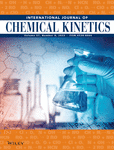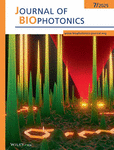Journal list menu
Export Citations
Download PDFs
Retraction
Open Access
oa
Retracted: Highly Active Rare-Earth-Metal La-Doped Photocatalysts: Fabrication, Characterization, and Their Photocatalytic Activity
- First Published: 28 April 2022
Editorial
Open Access
oa
Development of Visible Light-Responsive Photocatalysts
- First Published: 20 March 2012
Research Article
Open Access
oa
Photosensitized Oxidation of 9,10-Dimethylanthracene on Dye-Doped Silica Composites
- First Published: 27 February 2012
Research Article
Open Access
oa
Photoresponse of Visible Light Active CM-n-TiO2, HM-n-TiO2, CM-n-Fe2O3, and CM-p-WO3 towards Water Splitting Reaction
- First Published: 19 February 2012
Research Article
Open Access
oa
Photocatalytic Degradation of Pesticides in Natural Water: Effect of Hydrogen Peroxide
- First Published: 15 February 2012
Research Article
Open Access
oa
Photocatalytic Activity and Characterization of Carbon-Modified Titania for Visible-Light-Active Photodegradation of Nitrogen Oxides
- First Published: 08 February 2012
Research Article
Open Access
oa
Sm 2FeTaO 7 Photocatalyst for Degradation of Indigo Carmine Dye under Solar Light Irradiation
- First Published: 07 February 2012
Research Article
Open Access
oa
Photocatalytic Oxidation of Gaseous Isopropanol Using Visible-Light Active Silver Vanadates/SBA-15 Composite
- First Published: 09 January 2012
Research Article
Open Access
oa
Application of Pt/CdS for the Photocatalytic Flue Gas Desulfurization
- First Published: 02 January 2012
Review Article
Open Access
oa
An Enthusiastic Glance in to the Visible Responsive Photocatalysts for Energy Production and Pollutant Removal, with Special Emphasis on Titania
- First Published: 27 December 2011
Research Article
Open Access
oa
[Retracted] Highly Active Rare-Earth-Metal La-Doped Photocatalysts: Fabrication, Characterization, and Their Photocatalytic Activity
- First Published: 22 December 2011
Research Article
Open Access
oa
Hierarchical CuO/ZnO Membranes for Environmental Applications under the Irradiation of Visible Light
- First Published: 18 December 2011
Research Article
Open Access
oa
Synthesis, Characterization, and Evaluation of Boron-Doped Iron Oxides for the Photocatalytic Degradation of Atrazine under Visible Light
- First Published: 15 December 2011
Research Article
Open Access
oa
Silver Orthophosphate Immobilized on Flaky Layered Double Hydroxides as the Visible-Light-Driven Photocatalysts
- First Published: 13 December 2011
Research Article
Open Access
oa
Thickness Dependent on Photocatalytic Activity of Hematite Thin Films
- First Published: 11 December 2011
Research Article
Open Access
oa
Synthesis, Property Characterization, and Photocatalytic Activity of Novel Visible Light-Responsive Photocatalyst Fe2BiSbO7
- First Published: 21 November 2011
Research Article
Open Access
oa
One-Step Cohydrothermal Synthesis of Nitrogen-Doped Titanium Oxide Nanotubes with Enhanced Visible Light Photocatalytic Activity
- First Published: 20 November 2011
Research Article
Open Access
oa
Photodegradation of Malachite Green by Nanostructured Bi 2WO 6 Visible Light-Induced Photocatalyst
- First Published: 17 November 2011
Research Article
Open Access
oa
Preparation of Porous F-WO3/TiO2 Films with Visible-Light Photocatalytic Activity by Microarc Oxidation
- First Published: 17 November 2011
Research Article
Open Access
oa
Preparation of TiO2-Fullerene Composites and Their Photocatalytic Activity under Visible Light
- First Published: 15 November 2011





